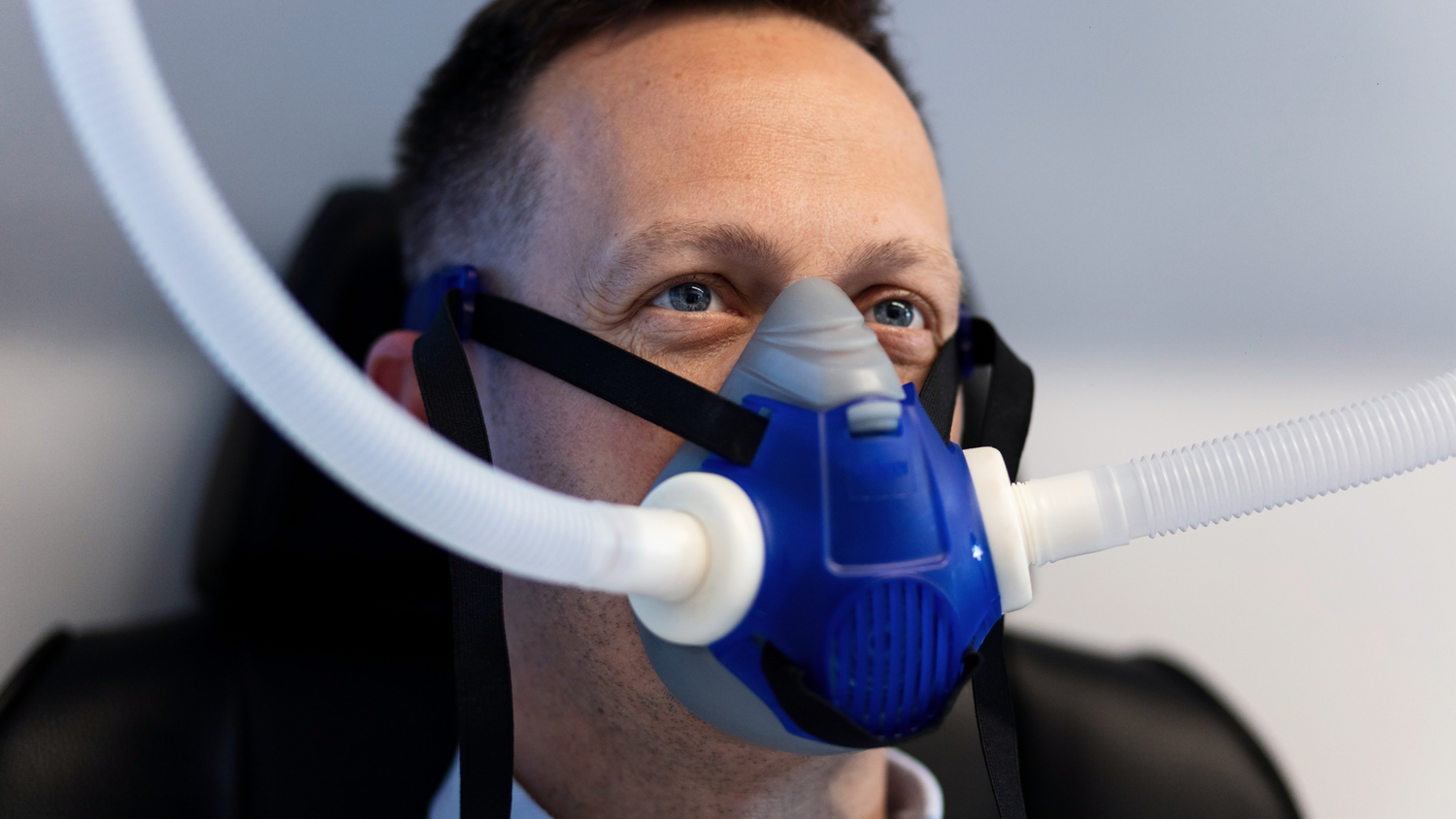Oxygen Therapy
Human life depends on oxygen, a vital gas that is present in the air we breathe. Some people with breathing problems are unable to take enough oxygen naturally. (1)
You can get more oxygen to breathe in as part of an oxygen therapy treatment. It is also called supplemental oxygen. It can only be obtained with a prescription from your doctor. You may get it at home, in a hospital or other medical facility, or both. Some people only require oxygen therapy temporarily, while others may need it long-term.
There are various devices that may provide you with oxygen. Some people utilize oxygen tanks with liquid or gas. Others use oxygen concentrators, which draw oxygen from the surrounding atmosphere. Finally, a mask, a tent, or a nose tube (cannula) will be used to deliver the oxygen to you. The extra oxygen is breathed in along with the normal atmospheric air.
The tanks and oxygen concentrators are available in portable versions. They might facilitate your mobility as you undergo therapy.
What Does Oxygen Therapy Do?
Your body receives the oxygen it lacks from breathing in air through oxygen therapy. Therefore, it could be considered a respiratory system aid.
Your body takes in the air via your nose or mouth when you breathe. The atmosphere is made up of 20% oxygen and 80% nitrogen. The lungs filter oxygen from this atmospheric air. They then deliver oxygen to your organs, tissues, and cells via blood vessels.
When you have lung issues, your cells do not receive enough oxygen to maintain the proper function of your body and organs. As a result, you develop hypoxemia or low blood oxygen levels. Hypoxemia can eventually result in organ failure and organ damage. On the other hand, getting too little oxygen can be fatal.
What Are Healthy Oxygen Levels?
A healthy oxygen level (medically known as oxygen saturation) is 95% or more. (2) Medical professionals recommend oxygen therapy when oxygen levels fall below 88%.
Healthcare professionals use these tests to evaluate oxygen levels:
Pulse oximeter: This device painlessly attaches to your finger, earlobe, or toe. A pulse oximeter indirectly measures oxygen levels, or saturation, without requiring a blood sample. The device's sensors use small blood vessels called capillaries to detect oxygen levels by shooting laser beams through your skin. At each appointment, a lot of physicians frequently perform this test. Additionally, you can get a pulse oximeter (pulse ox) from pharmacies for use at home. An individual may be a good candidate for more oxygen if the levels are low.
Arterial blood gas analysis. This is a test to assess your blood's levels of oxygen and carbon dioxide. This is the most precise way to assess lung function. The normal range of arterial blood oxygen is between 75 and 100 mmHg (0r millimeters of mercury). Oxygen supplementation is required when the oxygen level is 60 mmHg or lower. The cells in your lungs can become damaged if you take in too much oxygen, which is also risky. You shouldn't let your oxygen level get above 110 mmHg.
Lung function tests: Spirometry and other pulmonary function exams evaluate how well you breathe in and out. Some exams also gauge how well your lungs can deliver oxygen to your cells.
What Are The Symptoms Of Low Oxygen?
When you aren’t getting enough oxygen in your body, you’ll experience several symptoms, including:
- Shortness of breath.
- Rapid breathing.
- Wheezing or coughing.
- Fast heart rate.
- Confusion.
- Sweating.
- Changes in skin color.
Seek emergency medical help if you encounter any of these symptoms.
Who Needs Oxygen Therapy?
Those unable to get enough oxygen on their own are administered oxygen therapy. This frequently results from lung diseases that impair the lungs' capacity to absorb oxygen, such as:
- Pneumonia.
- Chronic obstructive pulmonary disease (COPD).
- Trauma to the respiratory system.
- Bronchopulmonary dysplasia, underdeveloped lungs in newborns.
- Asthma.
- Heart failure.
- Sleep apnea.
- Cystic fibrosis.
- Lung disease.
While some people require oxygen therapy regularly, others only do so occasionally or under certain circumstances. For example, in addition to using portable oxygen equipment or an oxygen supply in their homes, some people receive oxygen therapy in a doctor's office.
What Are The Different Kinds Of Oxygen Therapies?
The use of oxygen therapy can be done in a variety of ways. (3) These consist of the following:
- Liquid oxygen.
- Oxygen gas.
- Hyperbaric oxygen therapy.
- Oxygen concentrators.
Oxygen gas
A transportable tank can be used to store oxygen gas. These are known as compressed gas systems/ Within the home, a bigger fixed concentrator is used, while a portable, smaller oxygen tank can be used when leaving the house. The oxygen supply can last longer by utilizing smaller tanks and oxygen-conserving equipment. Instead of being given constantly, oxygen is delivered in pulses.
Oxygen concentrators
Compared to the other options, oxygen concentrators are less portable. The oxygen concentrator is a device that draws oxygen from the air, concentrates it for therapeutic use, and filters out other naturally occurring gases. Portable versions are available, but most models are too big to be portable.
Oxygen is delivered from the tank through a tube. Then, it enters the lungs via a face mask, a nasal tube, or a tube put directly into the person's windpipe.
Liquid oxygen
Liquid oxygen can be stored in a portable tank. Since liquid oxygen is highly concentrated, a smaller tank can hold more of the gas. This is useful for those who are very active, but if it isn't used right away, it will evaporate. These tanks can be filled again, and many locations offer home delivery of both liquid and gaseous oxygen.
Hyperbaric oxygen therapy
Hyperbaric oxygen therapy is not like the other forms of oxygen therapy. (4) Here, people will inhale only pure oxygen in a pressurized chamber or a room. The air pressure within the hyperbaric chambers is three to four times higher than outside. By doing this, more oxygen is given to the body's tissues. When treating wounds, severe infections, or air bubbles in your blood vessels, this method of oxygen delivery is frequently used. However, a careful approach should be taken during hyperbaric therapy to prevent too high blood oxygen levels.
Benefits Of Oxygen Therapy
Regardless of the reason for use, oxygen therapy can benefit people who frequently have low oxygen levels. Regular oxygen therapy can make people more active and mobile by reducing shortness of breath. Additionally, it can considerably raise the quality of life and frequently extend life expectancy.
Additionally, oxygen therapy might decrease symptoms such as the following:
- Irritability.
- Headaches.
- Fatigue.
- Swollen ankles.
Children with chronic lung diseases who receive oxygen therapy can benefit from faster growth and development. Additionally, it can alleviate behavioral issues or symptoms such as headaches brought on by low oxygen levels.
Guidelines For Using Oxygen Therapy
You will receive a prescription from your doctor to start oxygen therapy. You'll receive instructions on how and when to use it. The flow rate, or how much oxygen you'll require per minute, will be included in the instructions. You must strictly abide by the directives given to you by your doctor. Before making any modifications, consult them if you believe the oxygen therapy is not helping you.
Some people only use oxygen when they are asleep or exercising. Others constantly need the gas. Most types of oxygen therapy have transportable oxygen tanks, so you can take them outside the house if necessary.
While receiving oxygen therapy, avoid using drugs or alcohol, as these can cause breathing problems. Also, before discussing oxygen therapy, inform your doctor of any other prescription drugs you are taking.
What Are The Risks Of Oxygen Therapy?
Oxygen therapy is generally safe, although it rarely has adverse side effects. These include fatigue, a bloody or dry nose, and morning headaches.
Although it is not a flammable gas, oxygen is still required for combustion. Fires are prone to burn faster in environments with too much oxygen. When using oxygen tanks near heaters and open flames, exercise caution. Also, keep oxygen tanks securely.
Here are some safety tips to follow while on oxygen therapy.
- Do not use open flames or smoke in the space where someone is utilizing oxygen.
- Increase the number of fire alarms in your home to help avoid serious problems.
- Keep oxygen away from the stove, the oven, and grease when cooking.
- Tape the oxygen tube to the back of your shirt to prevent tripping over it or the oxygen tank.
- Only keep oxygen in a location with open airflow around the tank. Never keep it in a trunk or a tiny closet.
The Takeaway
When lung issues prevent you from breathing in enough oxygen, oxygen therapy can be a life-saving medical procedure. You might require additional oxygen all day, every day, or only occasionally. You can select the oxygen therapy delivery system that best suits your needs by reviewing the available options with your healthcare professional. When using oxygen treatment, adhering to particular safety precautions is vital.
References
- Corsonello, A et al. “The oxygen therapy.” Current medicinal chemistry vol. 20,9 (2013): 1103-26. doi:10.2174/0929867311320090002
- Hafen BB, Sharma S. Oxygen Saturation. [Updated 2022 Nov 23]. In: StatPearls [Internet]. Treasure Island (FL): StatPearls Publishing; 2023 Jan-. Available from: https://www.ncbi.nlm.nih.gov/books/NBK525974/
- Hardavella, Georgia et al. “Oxygen devices and delivery systems.” Breathe (Sheffield, England) vol. 15,3 (2019): e108-e116. doi:10.1183/20734735.0204-2019
- Shah, Jayesh. “Hyperbaric oxygen therapy.” The journal of the American College of Certified Wound Specialists vol. 2,1 9-13. 24 Apr. 2010, doi:10.1016/j.jcws.2010.04.001



